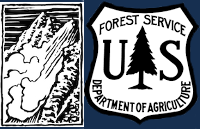This avalanche fully buried and injured a skier on 1/29/13. It broke 1-3 feet deep.
12-13
Two different avalanche problems exist near Cooke City. Shooting cracks seen at lower elevation is a clear sign of unstable snow. Photos: B. Fredlund
Over two feet of snow in the past four days has heavily loaded slopes in the northern Gallatin Range. This slope did not appear to be wind loaded, yet produced a natural avalanche. Areas where the new snow rests over weaker, faceted snow formed in January will be the most prone to avalanches. Photo GNFAC
Forecast link: GNFAC Avalanche Advisory for Sat Feb 2, 2013
GNFAC Avalanche Advisory for Fri Feb 1, 2013
Bridger Range Northern Gallatin Range
Over the past three days a heay load was deposited on a very weak foundation. Stability tests produced unstable results both within the storm snow and on the new snow/old snow interface. Dangerous avalanche conditions exist on Mt Ellis. Photo GNFAC
Forecast link: GNFAC Avalanche Advisory for Fri Feb 1, 2013
Mt Ellis - nearly two feet of new snow was deposited on a weak layer of facets. Signs of instability such as shooting cracks and collapsing were obvious. Dangerous avalanche conditions exist in this area. Photo GNFAC
GNFAC Avalanche Advisory for Thu Jan 31, 2013
Bridger Range Northern Gallatin Range
The message for today is simple. Heavy snowfall + strong winds will create both natural and human triggered avalanches. There are three avalanche problems which are interesting to discuss but irrelevant to the travel advice today. Avoid avalanche terrain.
GNFAC Avalanche Advisory for Wed Jan 30, 2013
The Bridger Range
The avalanche equation is easy: 27 inches of 3% powder + 40 mph winds = avalanches.
